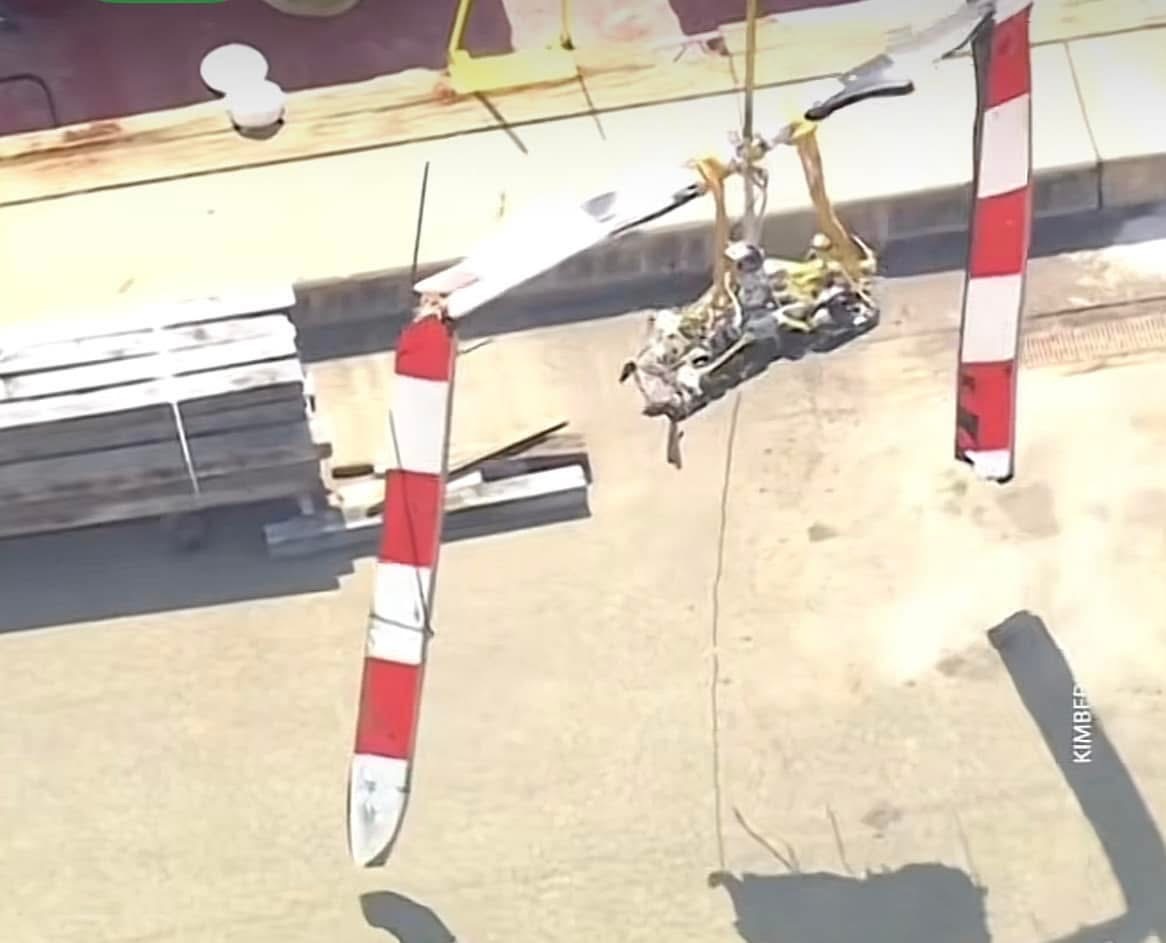Earlier this week—Monday evening, after hours—I shared a private technical breakdown with colleagues based on the initial video of the tragic helicopter accident in New York. My early working theory was that:
- The tailboom failed in flight, likely aft of the attachment fittings.
- This initiated a massive aft CG shift, possibly pitching the aircraft into a steep nose-down attitude.
- I suggested that the pilot may have pulled hard on collective and cyclic in an attempt to regain control, possibly resulting in over-torque damage to the mast.
- The drivetrain and rotor system were then seen separating from the fuselage in-flight, with the rotors still under rotation.
Today, with the release of NTSB B-roll footage and high-resolution stills from the recovery effort, we’ve gained critical new visual evidence—and several aspects of that initial assessment can now be refined or clarified.
Tailboom and Fuselage Separation
- The tailboom separated at the first structural bulkhead aft of the attachment fittings.
- This is a key detail—it rules out maintenance-related attachment failure, as the separation occurred downstream of the mount points.
- The tail rotor control rod and structure suggest forward folding on the aircraft’s right-hand side, potentially causing structural contact with the fuselage or deck—supporting the earlier CG-shift/fuselage impact theory.

Main Rotor and Transmission Assembly
- The main rotor system, transmission, nodal beam mounts, and deck structure were recovered together, intact as an assembly.
- The Van Horn rotor blades show fractures ~3–5 feet outboard of the grips.
- The transmission case is magnesium and visibly intact.
- The mast is bent and possibly twisted.
Initially, I theorized that a severed tail rotor driveshaft could have led to an engine overspeed, followed by an aggressive corrective input from the pilot (high collective, aft cyclic), resulting in mast overload and deformation.
But video from today shows something critical:
In the final moments before impact, the rotor system is seen toppled 90°, rotating horizontally like a wheel, with the mast and gearbox parallel to the ground. Upon water impact, the blade tips would have struck first, with the gearbox’s momentum continuing forward, bending the mast through rotational inertia at the moment of blade-tip strike.
So—was it an overspeed and overtorque? Possibly, but this impact theory now appears far more plausible. It’s still unconfirmed, but the visual evidence reshapes the probable chain of events.
Other Observations
- This was not a blade strike. The physical break patterns and the lack of any visible blade contact with the fuselage confirm what the flight video already suggested.
- Some social media chatter has circulated suggesting survivors were pulled from the water and later passed. I’ve seen no credible reports supporting this claim—and from the condition of the wreckage, it seems unfortunately impossible. Please refrain from speculating. Families and investigators deserve better than that.
Final Thoughts
This evolving assessment is not meant to pre-empt the official NTSB findings, which we all await. But for those of us in aviation, engineering, and maintenance, these observations help us learn, sharpen our understanding, and improve future safety outcomes.
To all those working in the field, on the ground, or behind the scenes: your attention to detail matters, and your voice of reason matters even more in moments like these.
I’ll continue to follow the case and update if and when new information is made available.
#aviation #rotorcraft #engineering #ntsb #aircraftmaintenance #helicopters #safety #accidentinvestigation #linkedinaviation

